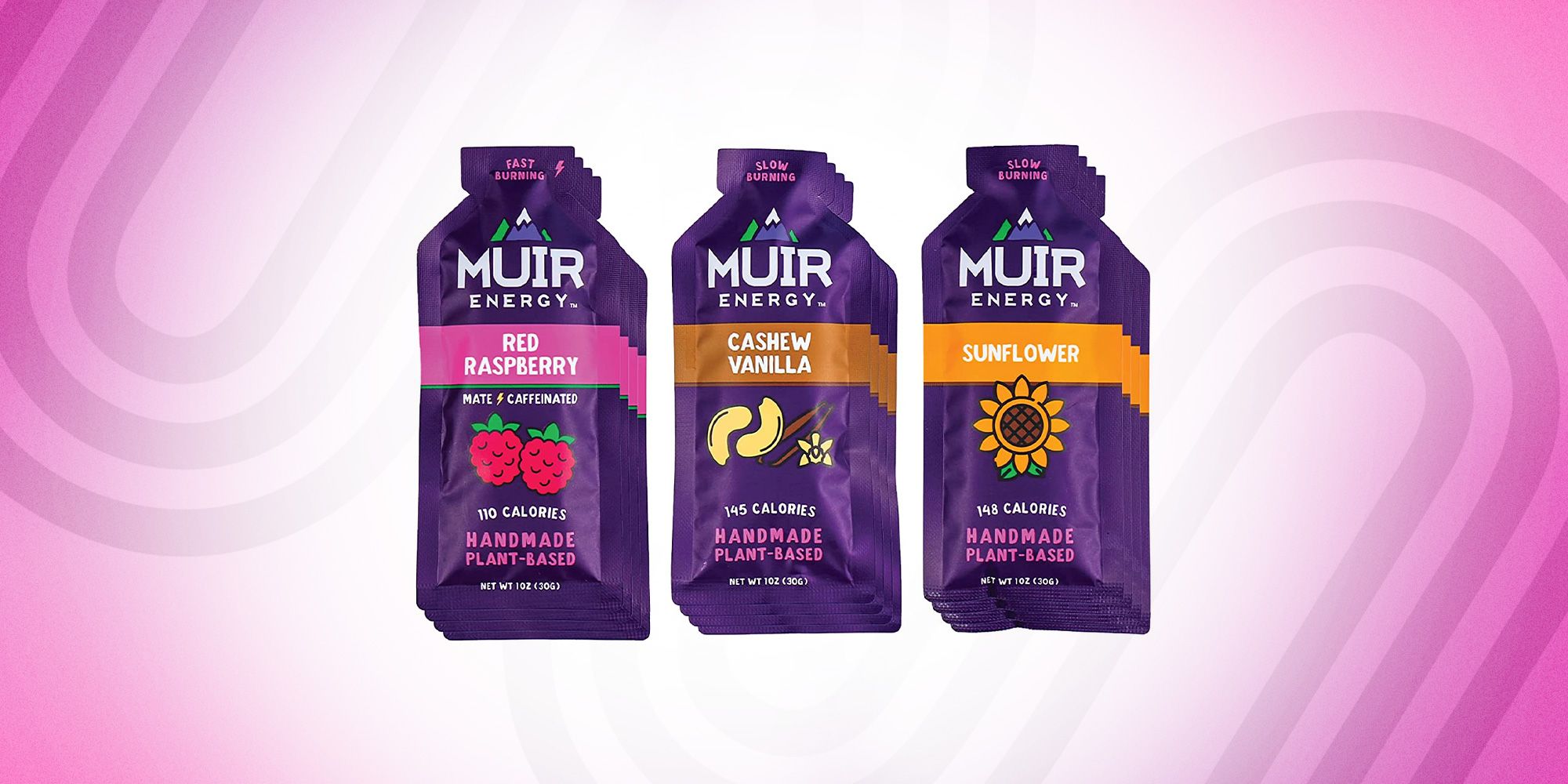

Featured
What Is Endurance In Physical Fitness
Modified: January 22, 2024
Discover the importance of endurance in physical fitness and how it can enhance your performance. Read this featured article to learn more.
Introduction
When it comes to physical fitness, endurance is a crucial component that often gets overlooked. Often referred to as stamina, endurance is the ability of the body to sustain physical activity over an extended period of time. It is an essential aspect of physical fitness and plays a vital role in various activities such as running marathons, participating in team sports, or even carrying out everyday tasks with ease.
Endurance is not only important for athletes, but for individuals of all fitness levels. Whether you are an avid gym-goer, a recreational sports enthusiast, or someone simply looking to improve your overall health and well-being, building endurance should be a part of your fitness routine.
Endurance can be measured in terms of cardiovascular endurance, muscular endurance, or a combination of both. Cardiovascular endurance refers to the ability of the heart, lungs, and blood vessels to deliver oxygen to the muscles during prolonged exercise. On the other hand, muscular endurance is the ability of the muscles to exert force repeatedly over an extended period of time.
Before we delve deeper into the importance of endurance in physical fitness and how to improve it, let’s take a closer look at the different types of endurance and how they contribute to overall fitness.
Definition of Endurance
Endurance is the ability of the body to sustain prolonged physical activity, resisting fatigue and maintaining optimal performance. It is a measure of how efficiently the body can utilize oxygen and energy resources to support continuous muscular contractions. Endurance is not a single attribute, but rather a combination of cardiovascular endurance and muscular endurance.
Cardiovascular endurance, also known as aerobic endurance, refers to the ability of the heart, lungs, and blood vessels to supply oxygen and nutrients to the working muscles during prolonged physical activity. It is crucial for activities such as running, cycling, swimming, or any other sustained aerobic exercise. A high level of cardiovascular endurance ensures that the muscles receive enough oxygen, which allows them to work for longer periods without becoming fatigued.
Muscular endurance, on the other hand, relates to the ability of specific muscles or muscle groups to exert force repeatedly over an extended period of time. It is necessary for activities that involve repetitive movements or sustaining muscle contractions, such as weightlifting, calisthenics, or endurance-based sports like rowing or cross-country skiing. Muscular endurance not only enables prolonged performance but also helps prevent muscle fatigue and injuries.
Endurance is not solely determined by genetics; it can be developed and improved through regular exercise and proper training. By engaging in specific endurance-focused activities, individuals can enhance their cardiovascular and muscular endurance capacities, allowing them to perform at higher intensities and for longer durations.
Understanding the different components of endurance and how they contribute to overall physical fitness is essential for designing effective workout routines and achieving optimal performance in various activities.
Types of Endurance
Endurance can be classified into different types based on the type of physical activity and the energy systems involved. Each type of endurance is important for specific activities and requires specific training to improve.
1. Cardiovascular Endurance: Cardiovascular endurance, also known as aerobic endurance, is the ability of the cardiovascular system to supply oxygen and nutrients to the working muscles during sustained physical activity. It mainly relies on the aerobic energy system, where the body uses oxygen to produce energy. Activities such as running, swimming, cycling, or hiking are excellent for improving cardiovascular endurance. Training for cardiovascular endurance involves engaging in prolonged moderate-intensity exercises that increase heart rate and maximize oxygen uptake.
2. Muscular Endurance: Muscular endurance is the ability of a specific muscle or muscle group to exert force repeatedly or to sustain a contraction over an extended period. It is necessary for activities that require repetitive movements or holding a position for an extended time. Weightlifting, bodyweight exercises, and activities like yoga and pilates help develop muscular endurance. Training for muscular endurance generally involves performing higher repetitions with lighter weights or bodyweight, focusing on building muscular stamina and reducing fatigue.
3. Anaerobic Endurance: Anaerobic endurance is the ability to perform intense physical activities for a shorter duration without relying on oxygen as the primary source of energy. It predominantly uses the anaerobic energy system, which relies on stored energy sources like ATP and glycogen. Activities such as sprinting, weightlifting, or high-intensity interval training (HIIT) aim to improve anaerobic endurance. Training for anaerobic endurance involves short bursts of high-intensity exercise followed by brief recovery periods, challenging the body’s ability to generate energy without oxygen.
4. Speed Endurance: Speed endurance is the ability to sustain high-intensity movements over a relatively longer period. It combines aspects of both aerobic and anaerobic endurance. Speed endurance training is especially important for athletes engaged in sports that require short bursts of high-intensity activities with minimal recovery time, such as soccer, basketball, or sprinting. Interval training, tempo runs, and repeated sprints are common methods to improve speed endurance.
Understanding the different types of endurance is important for tailoring training programs to specific goals and activities. Combining exercises that target different types of endurance allows individuals to develop a well-rounded fitness level, enabling them to perform at their best in various physical pursuits.
Importance of Endurance in Physical Fitness
Endurance is a fundamental component of physical fitness, playing a crucial role in overall health and well-being. Here are some key reasons why endurance is important:
1. Enhanced Performance: Building endurance improves your physical performance across various activities and sports. Whether you’re running a marathon, playing a game of soccer, or participating in a long-distance cycling event, having good endurance allows you to sustain your effort, maintain energy levels, and perform at a high level for an extended period. It helps you go the distance, outlast opponents, and achieve personal bests.
2. Increased Stamina: Endurance training increases your stamina, allowing you to engage in daily activities without getting easily fatigued. From climbing stairs to carrying groceries, having good endurance helps you maintain energy throughout the day and reduces feelings of exhaustion and tiredness.
3. Weight Management: Regular endurance exercise aids in weight management by increasing your calorie expenditure. High-intensity endurance activities help burn calories during the exercise itself, while building muscle endurance boosts your metabolic rate, leading to continued calorie burning even at rest. This can help maintain a healthy body weight and reduce the risk of obesity.
4. Improved Cardiovascular Health: Endurance exercise has a profound impact on cardiovascular health. It strengthens the heart muscle, increases its efficiency, and improves blood flow and oxygen delivery to the entire body. Regular endurance training helps lower resting heart rate, reduces blood pressure, and decreases the risk of heart disease, stroke, and other cardiovascular conditions.
5. Enhanced Mental Health: Endurance exercise is known to have positive effects on mental health. It releases endorphins, the “feel-good” hormones that boost mood and reduce stress and anxiety. Engaging in endurance activities also promotes better sleep patterns, improves cognitive function, and enhances overall mental well-being.
6. Increased Energy Levels: Improving endurance leads to an increase in energy levels and a reduction in fatigue. Endurance exercise stimulates the production of mitochondria, the energy powerhouses of our cells, making them more efficient at producing ATP (adenosine triphosphate), the energy currency of the body. This results in improved energy levels, allowing you to tackle daily tasks with vigor and enthusiasm.
7. Longevity and Quality of Life: Endurance training is associated with longevity and a better quality of life. People with higher endurance tend to have lower mortality rates and are less prone to chronic diseases and age-related decline. Maintaining good endurance as you age can help preserve functional independence and overall vitality.
Considering the wide-ranging benefits, it is evident that endurance training should be an integral part of any fitness regimen. By incorporating activities that specifically target endurance, you can improve your physical and mental well-being, enhance performance, and enjoy a healthier, more vibrant life.
Benefits of Endurance Training
Endurance training, whether it’s cardiovascular or muscular endurance-focused, offers a wide array of benefits for individuals of all fitness levels. Here are some key advantages of incorporating endurance training into your exercise routine:
1. Improved Cardiovascular Health: Endurance training strengthens the heart muscle and improves cardiovascular function. Regular endurance exercise promotes better blood circulation, lowers resting heart rate, reduces blood pressure, and lowers the risk of cardiovascular diseases such as heart attack, stroke, and high cholesterol.
2. Increased Stamina and Energy Levels: Endurance training boosts your stamina, allowing you to sustain physical activity for longer durations. As your fitness level improves, you’ll notice increased energy levels and improved overall endurance in everyday activities. This translates to increased productivity and a higher quality of life.
3. Weight Management and Fat Loss: Endurance exercises are highly effective for weight management and fat loss. Engaging in activities such as running, cycling, or swimming helps burn calories, promotes fat utilization, and improves metabolic efficiency. Regular endurance training boosts your metabolism, aiding in weight loss or maintenance.
4. Enhanced Athletic Performance: Endurance training is crucial for athletes in sports such as distance running, cycling, swimming, and team sports. It improves the body’s ability to sustain intense physical effort over prolonged periods, leading to enhanced performance in competitions and improved recovery between training sessions.
5. Increased Mental and Emotional Well-being: Endurance training is known to release endorphins, the body’s natural mood enhancers. Regular engagement in endurance exercises helps reduce stress, alleviate symptoms of anxiety and depression, and improve overall mental well-being. It also promotes better sleep patterns and boosts cognitive function.
6. Reduced Risk of Chronic Diseases: Endurance training reduces the risk of a wide range of chronic diseases. It helps manage and prevent conditions such as type 2 diabetes, obesity, hypertension, and certain types of cancer. By engaging in regular endurance exercise, you can significantly improve your overall health and reduce the risk of chronic diseases.
7. Increased Longevity and Quality of Life: Endurance training has been linked to increased longevity and a better quality of life. Regular exercise, particularly endurance exercises, helps prevent age-related declines in physical and cognitive functions, maintaining functional independence and vitality into old age.
8. Boosted Immune Function: Regular endurance exercise has been shown to have positive effects on immune function. It reduces the risk of upper respiratory tract infections, improves immune responses, and enhances the body’s ability to fight off pathogens and illnesses.
9. Social Engagement: Many endurance activities can be enjoyed with others, creating opportunities for social interaction and engagement. Joining group classes, running clubs, or participating in team sports can provide a sense of community, motivation, and support, making endurance training more enjoyable and sustainable.
With these numerous benefits, it’s clear that endurance training is a valuable addition to any fitness routine. Whether your goal is to improve cardiovascular health, lose weight, enhance athletic performance, or simply lead a healthier lifestyle, incorporating endurance training into your exercise regimen will undoubtedly yield positive results.
Factors Affecting Endurance
Endurance is influenced by various factors that can impact an individual’s ability to sustain physical activity over an extended period. Understanding these factors can help individuals identify areas that need improvement and customize their training programs accordingly. Here are some key factors that affect endurance:
1. Genetics: Genetic factors play a role in determining an individual’s natural endurance abilities. Some people are genetically predisposed to have higher levels of cardiovascular and muscular endurance, while others may have to work harder to develop and improve their endurance. However, it’s important to note that genetic predisposition is not a limitation, and endurance can still be enhanced through proper training and conditioning.
2. Fitness Level: The current fitness level of an individual directly affects their endurance capacity. Regular engagement in physical activity and endurance training improves the body’s ability to utilize oxygen, conserve energy, and sustain physical effort. Consistent training helps individuals develop better endurance over time, allowing them to perform at higher intensities for longer durations.
3. Body Composition: Body composition, specifically the ratio of lean muscle mass to body fat, can impact endurance. A higher proportion of lean muscle mass improves muscular endurance and overall athletic performance. Excess body fat, on the other hand, places additional strain on the cardiovascular system, making endurance activities more challenging. Maintaining a healthy body composition through proper nutrition and regular exercise can positively influence endurance levels.
4. Training Specificity: The type of training and activities individuals engage in greatly affects their endurance level. Cardiovascular training, such as running, swimming, or cycling, primarily targets cardiovascular endurance. Meanwhile, engaging in activities that require repetition or sustaining muscle contractions, such as weightlifting or calisthenics, enhances muscular endurance. Having a well-rounded training program that incorporates both cardiovascular and muscular endurance exercises optimizes overall endurance capacity.
5. Nutrition and Hydration: Proper nutrition and hydration play a vital role in endurance performance. Adequate intake of macronutrients (carbohydrates, proteins, and fats) and micronutrients (vitamins and minerals) provides the necessary energy and nutrients for optimal performance. Maintaining proper hydration levels is also essential for endurance activities, as dehydration can impair performance and increase the risk of fatigue and muscle cramps.
6. Mental Stamina: Endurance is not just physical; it also requires mental stamina. Mental factors, such as motivation, focus, and determination, influence an individual’s ability to push through discomfort and fatigue. Developing mental toughness through visualization techniques, positive self-talk, and goal setting can enhance endurance performance and help individuals overcome mental barriers.
7. Rest and Recovery: Adequate rest and recovery are crucial for improving endurance. Endurance training places stress on the body, and allowing sufficient time for rest and recovery enables the body to repair and adapt. Overtraining can lead to decreased endurance, increased risk of injury, and performance plateaus. Balancing training with rest, sleep, and proper recovery methods is essential for optimizing endurance gains.
8. Age and Gender: Age and gender can influence endurance levels. Generally, younger individuals tend to have higher endurance capacities compared to older individuals due to various physiological factors. Additionally, hormonal differences between males and females can impact endurance performance. However, it’s important to note that with proper training and conditioning, individuals of all ages and genders can improve their endurance levels.
By considering these factors, individuals can identify areas of improvement and develop a targeted approach to enhance their endurance capacity. Every individual is unique, and understanding these influencing factors allows for a more personalized and effective training plan.
How to Improve Endurance
Improving endurance requires a consistent and progressive approach to training that targets both cardiovascular and muscular endurance. Here are effective strategies to help you enhance your endurance:
1. Aerobic Exercise: Engage in activities that elevate your heart rate and challenge your cardiovascular system. Running, cycling, swimming, and brisk walking are excellent aerobic exercises that improve cardiovascular endurance. Start with shorter durations and gradually increase the time and intensity as your fitness level improves.
2. Interval Training: Incorporate interval training into your workouts. Alternate between high-intensity bursts of physical activity and periods of recovery. This type of training effectively improves both cardiovascular and anaerobic endurance. For example, perform repeated sprints followed by periods of active rest or recovery jogging.
3. Long-Distance Training: Incorporate longer duration workouts into your routine to build endurance. Gradually increase the distance or time spent on activities like running, swimming, or cycling. This challenges your cardiovascular system and teaches your body to sustain physical effort over extended periods.
4. Cross-Training: Incorporate a variety of exercises and activities into your routine to target different muscle groups and energy systems. Cross-training not only prevents boredom but also enhances overall fitness and endurance. Include exercises such as strength training, yoga, Pilates, or sports like basketball or tennis.
5. Progressive Overload: Continuously challenge your body by gradually increasing the intensity, duration, or frequency of your workouts. Progressive overload stimulates adaptations in your body, leading to improved endurance. Gradually increase the distance, pace, or resistance in your workouts to ensure continued progress.
6. Strength Training: Incorporate strength training exercises that focus on muscular endurance. Perform exercises with lighter weights and higher repetitions to help improve the stamina of your muscles. This type of training complements cardiovascular endurance and improves overall physical performance.
7. Proper Nutrition and Hydration: Fuel your body properly to support endurance training. Consume a balanced diet that includes adequate carbohydrates, proteins, and healthy fats to provide the necessary energy for your workouts. Stay hydrated before, during, and after exercise to maintain optimal performance and prevent dehydration.
8. Rest and Recovery: Allow your body sufficient time to rest and recover between workouts. This allows for the adaptation and repair of muscles and helps prevent overtraining. Aim for 7-8 hours of quality sleep each night and incorporate active recovery activities, such as stretching or light walking, into your routine.
9. Consistency: Consistency is key in improving endurance. Make endurance training a regular part of your exercise routine and aim for balanced and progressive workouts. Consistently challenging your body and gradually increasing the intensity and duration of your workouts will yield better results over time.
10. Monitor Progress: Keep track of your workouts, distances, times, and other relevant metrics to monitor your progress. This not only helps you stay motivated but also allows you to adjust your training program as needed to continue improving your endurance.
Remember, improving endurance takes time and patience. Listen to your body, be consistent, and gradually push your limits. With dedication and persistence, you can significantly enhance your endurance and enjoy the benefits of increased stamina, better performance, and a healthier lifestyle.
Endurance and Different Exercise Modalities
Endurance plays a vital role in various exercise modalities, each requiring specific adaptations to improve the body’s ability to sustain physical effort. Here’s a look at how endurance relates to different types of exercise:
1. Cardiovascular Endurance: Activities that primarily focus on cardiovascular endurance include running, cycling, swimming, rowing, and aerobics. These exercises elevate the heart rate, challenge the cardiovascular system, and improve the body’s ability to deliver oxygen to working muscles. Regular cardiovascular endurance training enhances the efficiency of the heart and lungs, allowing for better oxygen uptake and utilization during prolonged activities.
2. Muscular Endurance: Muscular endurance exercises involve repetitive movements or sustained muscle contractions. These activities include bodyweight exercises (push-ups, squats, planks), weightlifting with lighter weights and higher repetitions, and circuit training. Muscular endurance training increases the ability of specific muscles or muscle groups to exert force repeatedly over extended periods. This type of training helps delay muscle fatigue and builds stamina in the targeted muscles.
3. High-Intensity Interval Training (HIIT): HIIT combines short bursts of intense exercises with brief recovery periods. It challenges both cardiovascular and muscular endurance, pushing the body to adapt and improve its energy systems. HIIT workouts typically involve bodyweight exercises, plyometrics, sprints, or intense cardiovascular activities such as cycling or rowing. The alternating high-intensity and recovery periods improve cardiovascular fitness, increase anaerobic capacity, and enhance overall endurance performance.
4. Sports-Specific Endurance: Different sports require specific types of endurance. For example, endurance training for long-distance running focuses on sustained aerobic activities and gradually increasing mileage over time. Endurance training for team sports like soccer or basketball requires a combination of cardiovascular endurance, speed, agility, and quick recovery ability. Sports-specific endurance training involves practicing game-specific drills, interval training, and sport-specific conditioning exercises.
5. CrossFit: CrossFit combines various functional movements, high-intensity exercises, and strength training. It incorporates elements of cardiovascular endurance, muscular endurance, and power. CrossFit workouts are designed to challenge the body in different ways, improving overall fitness and endurance across multiple modalities.
6. Adventure Racing or Obstacle Course Racing (OCR): Adventure racing and OCR events require participants to navigate through challenging terrains, overcome obstacles, and complete endurance-based activities. Building a well-rounded endurance capacity that includes cardiovascular fitness, muscular endurance, running on uneven terrain, and engaging in functional movements is essential for success in these events.
7. Endurance-Based Classes: Various group exercise classes focus specifically on endurance training. Examples include spinning or indoor cycling classes, dance-based fitness classes, and boot camp-style workouts. These classes typically involve sustained aerobic exercises, interval training, and circuit training elements to challenge the cardiovascular system, build muscular endurance, and improve overall stamina.
It’s important to choose exercise modalities that align with your interests, goals, and individual preferences. Incorporating a variety of activities into your training regimen can help prevent monotony, challenge different energy systems, and lead to well-rounded endurance development.
Common Myths about Endurance Training
Endurance training is often surrounded by misconceptions and myths that can mislead individuals and hinder progress. Here are some common myths about endurance training debunked:
Myth 1: Endurance Training is Only for Athletes: It’s a common misconception that endurance training is only necessary for professional athletes or individuals participating in endurance-based sports. In reality, endurance training is beneficial for individuals of all fitness levels and is important for overall health and well-being. Whether you’re a recreational fitness enthusiast or someone looking to improve daily activities, building endurance should be a part of your fitness routine.
Myth 2: Endurance Training Only Involves Long, Slow Cardio Workouts: Endurance training is not solely limited to long, slow cardio sessions. While sustained cardio activities are effective for improving cardiovascular endurance, other training methods such as interval training, circuit training, and high-intensity workouts can also enhance endurance. These training approaches challenge different energy systems, promote faster adaptation, and improve overall endurance performance.
Myth 3: Endurance Training Leads to Bulky Muscles: Many people believe that endurance training results in bulky muscles. However, endurance training primarily focuses on building muscular stamina and endurance rather than muscle size. It involves high repetitions with lighter weights, bodyweight exercises, or sustained muscle contractions. To achieve significant muscle hypertrophy (increase in muscle size), higher intensity strength training and specific nutritional strategies are required.
Myth 4: Endurance Training Decreases Strength: Some individuals worry that focusing on endurance training will decrease their strength. While it’s true that endurance training may not result in significant strength gains, it does not necessarily cause a decrease in strength. Properly designed endurance training programs can actually complement strength training by improving muscular endurance, enhancing recovery between sets, and promoting better overall muscular performance.
Myth 5: Endurance Training is Always Boring: One common myth is that endurance training is monotonous and boring. While traditional cardio activities like jogging on a treadmill can become repetitive, there are many ways to make endurance training enjoyable and diverse. Engaging in group fitness classes, trying outdoor activities like hiking or cycling, or incorporating interval training and fun workout variations can keep your endurance training exciting and engaging.
Myth 6: Endurance Training is Only About Physical Fitness: Endurance training offers more than just physical benefits. It has positive effects on mental health, stress reduction, cognitive function, and overall well-being. Endurance exercise releases endorphins, which elevate mood, reduce anxiety, and improve sleep patterns. It also promotes mental toughness, discipline, and resilience, which can positively impact various aspects of life beyond the physical realm.
Myth 7: Endurance Training Takes a Long Time to See Results: Another common myth is that it takes a long time to see noticeable improvements in endurance. While significant improvements may take time, the body adapts relatively quickly to endurance training. With consistent training, proper nutrition, and adequate rest, you can experience improvements in cardiovascular fitness, muscular endurance, and overall stamina within a matter of weeks.
By dispelling these myths, individuals can approach endurance training with the right knowledge and expectations. Understanding the true benefits and principles of endurance training allows for more effective and enjoyable workouts, leading to improved performance, fitness gains, and overall well-being.
Conclusion
Endurance is a crucial component of physical fitness that impacts our ability to sustain physical activity, enhance performance, and lead a healthy and active lifestyle. Whether it’s cardiovascular endurance, muscular endurance, or a combination of both, improving endurance offers a wide range of benefits from better cardiovascular health to increased stamina and improved mental well-being.
Understanding the different types of endurance and the factors that affect it allows individuals to tailor their training programs accordingly. Incorporating aerobic exercises, strength training, interval training, and sports-specific workouts can help individuals develop a well-rounded and robust endurance capacity.
Common myths surrounding endurance training, such as the notion that it is only for athletes or that it leads to bulky muscles, need to be dispelled. Endurance training is beneficial for people of all fitness levels and offers numerous advantages beyond just physical fitness. It can positively impact mental health, body composition, and overall quality of life.
Improving endurance requires consistent effort, proper nutrition, adequate rest, and a balanced training approach. By gradually increasing intensity, duration, or frequency of exercises, individuals can push their limits and continue progressing in their endurance journey.
Whether your goal is to complete a marathon, excel in a sport, or simply lead a more active and energetic life, investing in endurance training is key. Engaging in regular endurance exercises not only improves physical performance but also contributes to overall health, longevity, and well-being. So, lace up your running shoes, hop on your bike, or dive into the pool and embark on the journey to improve your endurance and unlock your full potential.









